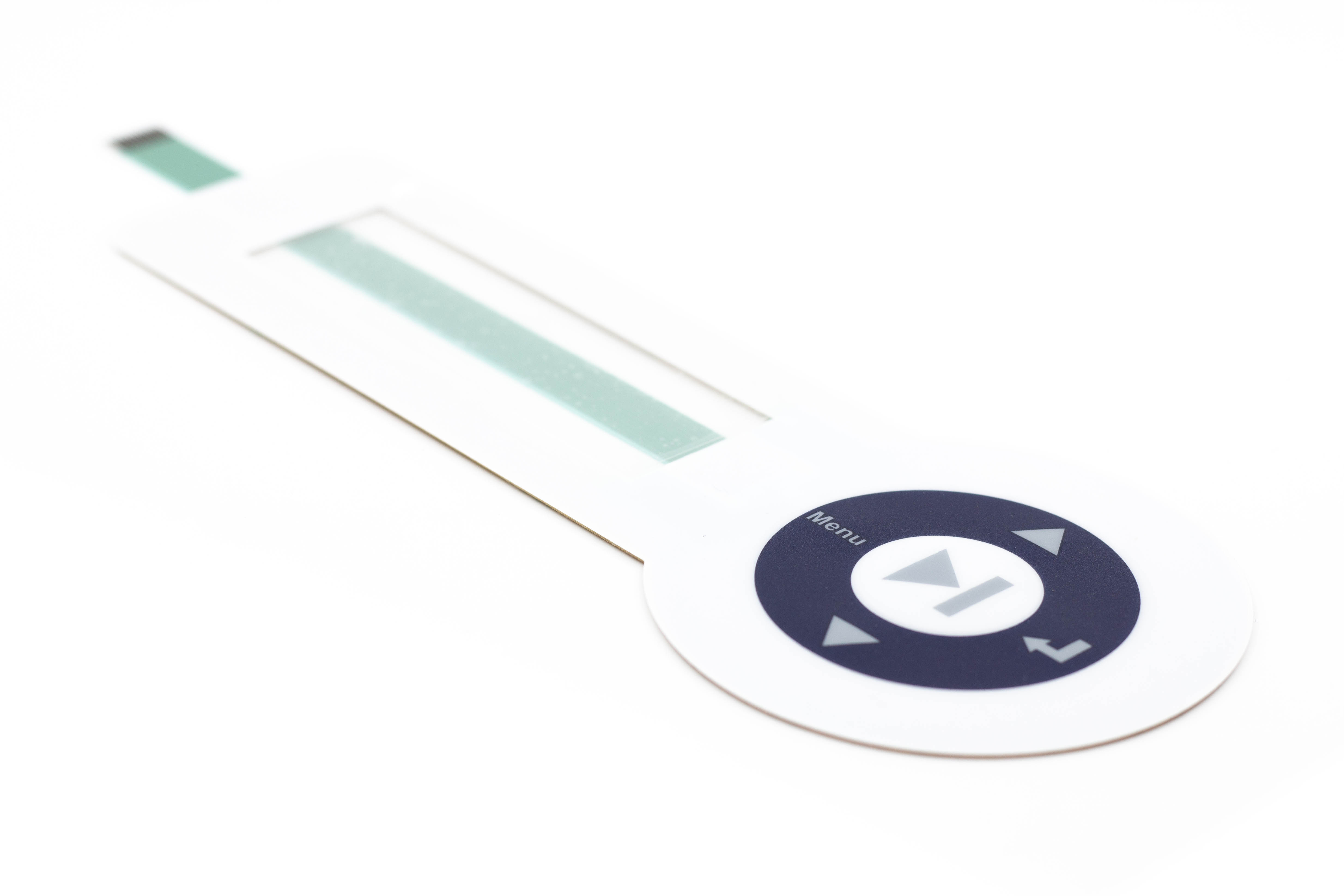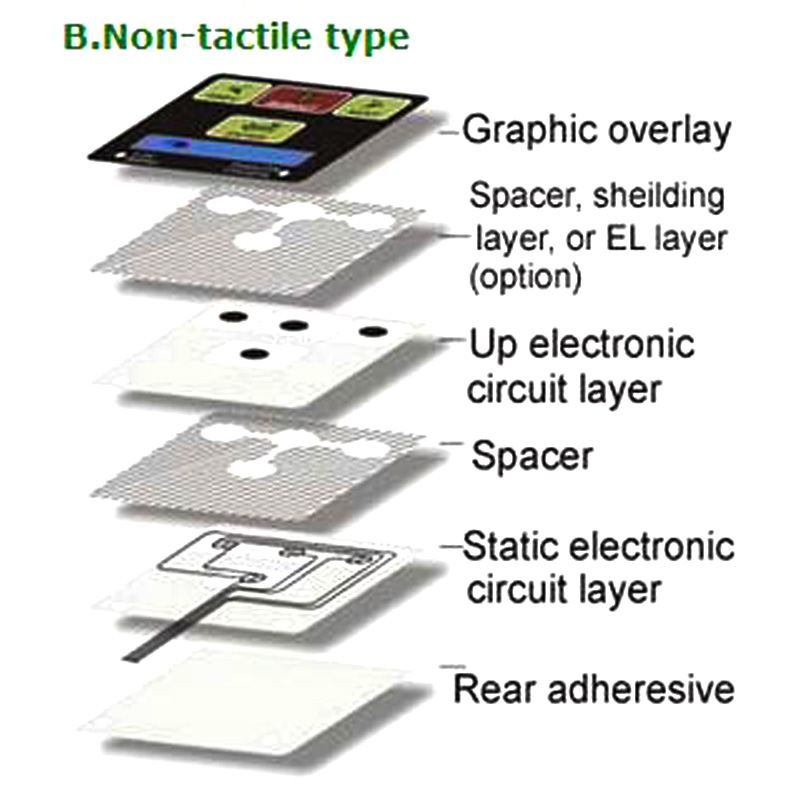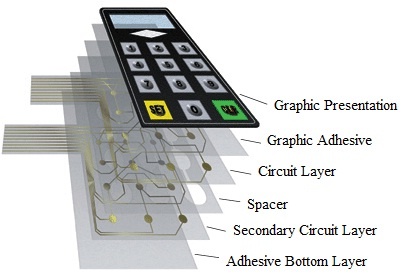Why is membrane switch a go-to choice in automotive dashboards?
The Manufacturing Refine Behind Membrane Layer Switch: What You Required to Know
The production process behind membrane layer changes combines careful layout, product selection, and quality assurance. It starts with understanding the intricacies of membrane layer switch layout and advances through numerous stages, consisting of material selections and printing methods. Each phase plays a vital role in making certain capability and toughness. The complexities of layer construction and the extensive screening standards might expose understandings that are not immediately noticeable. What lies past these foundational aspects?
Recognizing Membrane Change Layout
Membrane layer switches may appear easy at very first look, their layout involves elaborate considerations that ensure capability and longevity. The style procedure starts with an extensive understanding of user demands, consisting of the user interface's desired application and ecological variables. Ergonomics is a crucial element, as the layout should assist in simplicity of use while guaranteeing that tactile comments meets user expectations.Moreover, the layering of components, such as graphic overlays, glue layers, and conductive traces, have to be specifically crafted. membrane switch. This split setup not only influences the button's responsiveness yet likewise affects its longevity. Attention is offered to the securing methods employed to protect versus wetness and dust, which could endanger performance. Additionally, layout factors to consider reach aesthetic appeals, where color pattern and aesthetic clearness improve customer experience. Eventually, the design of membrane layer changes balances capability, individual experience, and resilience, ensuring that they satisfy the demands of numerous applications successfully
Materials Utilized in Membrane Change Manufacturing
When picking materials for membrane layer switch production, it is important to ponder both performance and longevity. The main products include polyester and polycarbonate movies, which provide adaptability and strength. These films are often coated with glue to guarantee appropriate bonding to substratums. Conductive inks, generally made up of silver or carbon, are crucial for producing electric connections within the switch, enabling dependable operation.Additionally, a safety layer, such as a tough coat, is often put on boost scratch resistance and durability. The option of backing product, such as acrylic or foam, can considerably affect the button's tactile feel and general individual experience. In addition, various environmental aspects, consisting of temperature level and humidity, should direct product option to assure peak performance in specific applications. Eventually, the appropriate mix of materials adds to the membrane layer button's capability and life-span, making informed choices important for producers.
The Printing Process: Creating Graphics and Text
The printing process in membrane switch production plays a substantial duty in generating high-quality graphics and message. Various graphic design strategies are used to assure aesthetic charm and performance, while careful ink selection approaches are crucial for durability and efficiency. Recognizing these aspects is fundamental for achieving ideal lead to membrane switch style.
Graphic Design Techniques
Graphic layout methods play a vital role in the printing procedure of membrane buttons, as they define just how graphics and message will ultimately show up on the end product. Effective visuals style entails the calculated use shades, fonts, and designs to boost readability and visual charm. Designers typically utilize vector graphics for scalability, making sure that photos stay sharp at numerous sizes. Furthermore, focus to contrast and positioning is essential, as it influences individual communication and aesthetic high quality. The unification of branding elements, such as logos, need to be handled with care to preserve brand name integrity. In general, thoughtful visuals layout techniques contribute significantly to the capability and attractiveness of membrane switches, affecting customer experience and item performance.
Ink Selection Techniques
Choosing the ideal ink is essential for accomplishing the preferred aesthetic top quality and durability in membrane layer switch production. Numerous ink types are used, including solvent-based, water-based, and UV-curable inks. Each kind supplies unique features, such as versatility, resistance, and attachment to ecological aspects. Solvent-based inks are commonly preferred for their durability and dynamic shades, while water-based inks are more eco-friendly yet might have constraints in bond. UV-curable inks supply quick treating and durable performance. Furthermore, color matching methods ensure that the chosen inks align with design specifications. Ultimately, the option of ink have to take into consideration factors such as application technique, substrate compatibility, and end-use demands to accomplish superior lead to membrane button graphics and message.
Layer Building and Assembly

Product Option Refine
A mindful selection of products is essential in the manufacturing process of membrane switches, as it straight affects capability and durability. The primary products made use of consist of polyester, polycarbonate, and numerous conductive inks. Polyester is usually preferred for its superb resistance to chemicals and abrasion, making it ideal for rough settings. Polycarbonate, on the various other hand, provides remarkable clearness and impact resistance, which is helpful for applications needing exposure and effectiveness. Conductive inks, typically made up of silver or carbon, are vital for producing reliable electric pathways. Additionally, the choice of adhesive products impacts the general stability of the switch - membrane switch. Reviewing aspects such as environmental direct exposure, tactile responses, and aesthetic requirements overviews makers in selecting the best products for their particular applications
Layer Adhesion Strategies
Adhering layers in membrane layer button construction is an essential procedure that guarantees capability and durability. Numerous bond techniques are utilized to secure excellent bonding between layers, which typically consist of visit this site making use of adhesives, warmth, and pressure. Pressure-sensitive adhesives (PSAs) are generally utilized for their convenience of application and immediate bonding capacities. In addition, thermal bonding methods can be used, where warm is made use of to activate glue homes, securing a strong bond. The selection of adhesion technique greatly depends upon the products involved and the particular application needs of the membrane switch. Correct alignment and click reference uniform application of adhesives are important to avoid issues, securing the switch runs properly throughout its intended life expectancy.
Top Quality Control Measures
Guaranteeing high quality control throughout the layer building and construction and assembly of membrane buttons is crucial for maintaining performance and dependability. This procedure typically involves a number of important actions, including extensive examinations at each phase of manufacturing. Manufacturers utilize advanced testing methods, such as peel tests and adhesion evaluations, to confirm the stability of layer bonds. Furthermore, visual assessments are carried out to recognize any type of flaws in printing or product variances. Ecological conditions, such as temperature and humidity, are thoroughly kept track of to guarantee perfect curing and adhesion. Regular calibration of tools aids preserve accurate manufacturing standards. By applying these top quality control procedures, producers can significantly reduce the threat of item failure, ensuring that the final membrane switches over satisfy the required requirements and consumer expectations.
Testing and Top Quality Control Procedures

Developments in Membrane Change Technology
As innovations in innovation remain to advance, membrane buttons are gaining from innovative growths that enhance their functionality and user experience. One remarkable development is the integration of capacitive touch innovation, which enables even more intuitive and responsive customer interfaces. This shift not just improves appearances however additionally decreases mechanical damage, extending the life expectancy of the switches.Additionally, advancements in graphic overlay products have caused boosted sturdiness and resistance to ecological factors such as wetness and UV light. These products now provide boosted clarity and brightness, additional boosting the visual appeal.Furthermore, the consolidation of wise modern technology is transforming membrane changes right into interactive control board, enabling connectivity with IoT gadgets. This connection cultivates a seamless user experience, leading the way for applications in numerous sectors, from healthcare to consumer electronics. Collectively, these advancements placement membrane layer switches over as critical elements in contemporary gadget style.
Often Asked Inquiries
Just how Lengthy Does the Membrane Layer Switch Over Production Refine Take?
The period of the membrane layer button production procedure can differ substantially. Variables such as intricacy, materials used, and production quantity impact timelines, with regular production varying from a couple of days to several weeks for completion.
What Are the Usual Applications for Membrane Switches?
Membrane layer buttons are generally made use of in various sectors, including automobile controls, family devices, medical devices, and consumer electronic devices (membrane switch). Their convenience and toughness make them excellent for applications requiring straightforward interfaces and trusted performance in diverse environments
Can Membrane Switches Over Be Custom-made for Specific Needs?

What Is the Life-span of a Typical Membrane Switch?
The life expectancy of a normal membrane layer button differs, however normally, it varies from 1 to 5 million cycles. Aspects such as use, setting, and worldly top quality substantially affect longevity and total efficiency with view time.

Are Membrane Changes Eco-friendly?
The ecological kindness of membrane switches differs. Some products utilized may not be recyclable, while others can be green. The total effect depends on making products and methods, necessitating careful factor to consider during option and disposal. The production process behind membrane layer changes combines careful layout, material option, and high quality control. It begins with recognizing the complexities of membrane layer switch design and advances through numerous stages, consisting of material selections and printing techniques. When picking materials for membrane layer switch production, it is vital to ponder both performance and durability. A cautious selection of products is essential in the production procedure of membrane buttons, as it directly influences capability and sturdiness. The selection of bond approach largely depends on the products entailed and the particular application needs of the membrane switch.